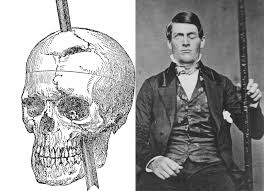
I’m about at the 200 mile mark of my PCT SOBO flip flop (just had to get some thru hiker lingo into the first sentence). I now have enough perspective to offer a few thoughts on my hike thus far. Most of this will be comparing it to my Appalachian Trail experience.
Cat Holing – on the AT this is a nightmare. Everywhere you try to dig you find roots of all sorts. Getting a cat hole dug “to code” is nigh well impossible. The PCT in contrast is a cat holing paradise. Nothing seems to grow here so all you are doing is shoveling sand – just like you are living in a giant litter box. I guess this is a plus for the PCT?
Trail Grade – I kept hearing how the PCT grade was easier because it was designed for horse traffic and thus limited to an average 10% grade compared to the AT. So far I am not impressed. I can report that there is indeed plenty of horse poop on the trail but nary a horse have I seen. Perhaps the poop is planted to perpetuate the myth about the grade on the PCT being easier? Time will tell but so far there have been plenty of steep inclines and places where I’d never take a horse, even if I owned one.
Wind – hands down the section on the PCT from Tehachapi to Hikertown takes the cake. On the day I got into Tehachapi the wind was gusting at 75 mph as I hiked over the final mountain top. I crab walked for a while as I tried to prevent myself from being blown over. I heard later that another hiker crawled through this section on his hands and feet. In contrast all I had to deal with on the AT was the misfortune of my pack cover being ripped off my pack by a wind gust while at the top of some mountain in Maine. But that is more just about Maine than anything else. Remember that in Maine they don’t believe that it is manly to have a bridge for you to walk over a stream – water is meant to be waded through not walked over.
The Bubble – both the AT and the PCT have them, i.e., groups of hikers heading north in a bit of a pack. As a SOBO flip flopper (more hiker lingo) I get to observe the bubble but am not in it. I prefer it this way even though I have to endure jokes like “hey you do know that Canada is in the OTHER direction, right”.
Green Tunnel – This refers to the trail going through a dense grove of trees. This is pretty much everywhere on the AT. No where to be found on the PCT however. Desert hiking is a different animal. The greatest concern is water because this section of the PCT doesn’t have much of it (more on this below). Not much water means not many trees which mean no green tunnel. At times this is an alien environment. Going through the Lake Hughes burn area made me feel like Matt Damon in “The Martian”. Pretty much nothing growing except for poodle bush which appears to be SoCal’s answer to poison ivy, only worse.
Water – I admit it. I am suffering from Water Anxiety. My initial solution was to carry 7 liters of water. Folks, believe me, this is close to insane. Adding 15 pounds of pack weight does not make Jack a happy camper. Gone are the days on the AT when you carried a liter, maybe 2 and just about always camped at a place with a water source. In contrast, on the PCT, you get to read comments like this in the Guthook PCT app: “next reliable water source is a tank in 15 miles. Last year Fred found two dead squirrels floating in the tank. He managed to fish one out but did draw water from the tank anyway since he was very thirsty. Be sure to filter and treat the water. Fred did and he apparently is still alive”. Note to reader – I did not take water from this tank.
Blazes – these are the paint slashes on tree trunks that let you know you are headed in the right direction. the AT has thousands of these. The PCT? Apparently they are non existent. Of course it is hard to put a blaze on a tree that doesn’t exist. And splashing paint on the sand doesn’t work well either. Still, route finding on the PCT can be difficult. I’ve come to intersections multiple times with no external clue as to what to do next except to observe where the foot prints seem to be going. Without my trusty Guthook app I could still be out there wandering around (or waiting to be rescued after punching the SOS button on my Garmin Mini).
Not sure if I am keeping score here in the great PCT vs AT debate. I’ll let the reader tally things up for themselves.















